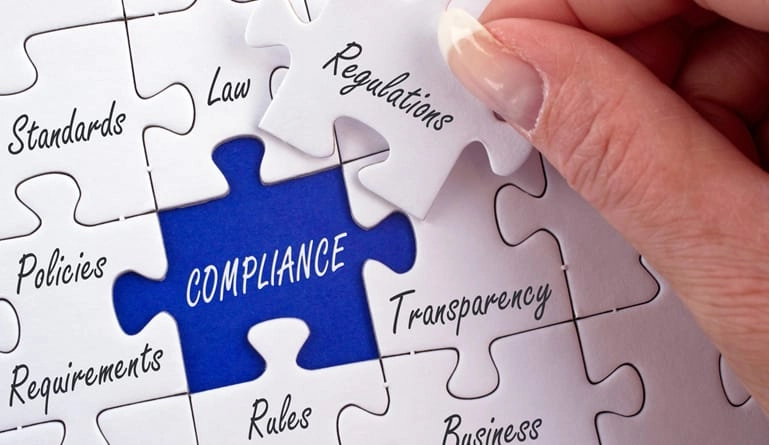An effective compliance program is the best way to guarantee your company aligns with local, state, and national regulations.
Having an effective compliance program is essential for companies to have in place. Not only is it essential for companies to guarantee their employees are compliant, they must also ensure they have a successful team that is constantly testing and monitoring compliance practices.
There are many laws in regards to compliance and it is essential that companies follow these laws to avoid penalties. Many companies forget that compliance is driven by daily workplace behavior. Employers need to not forget that people need to know what to do and not to do, and employees need to feel like they can bring any issue they encounter to their employer.
How to Build an Effective Compliance Program
- Start with Desired Results
- Involve Leaders
- Identify Common Behaviors
- Know How Employees Feel
- Make the Compliance Goal Cultural
Employees at all levels should have the ability to identify issues or potential problems. Employees should feel confident and encouraged to bring problems to management as they arise before damage is done. A good compliance plan will teach employees to identify all unsafe practices and address them with urgency. Leaders within the company have the responsibility to prevent compliance crises’ before they occur. The involvement of leaders in compliance will be seen along the chain of command, ensuring employees of the proper way to behave in the workplace. Leaders who demonstrate compliance with their daily routine show their employees how vitally important compliance is to the company.
Leaders in a company should listen to concerns of their employees and not make employees feel ostracized for bringing concerns forward to management. Employers that regularly survey their employees on multiple issues have a better understanding of the compliance within their company. Companies need to make sure most of their employees are answering the surveys positively, or else their organization has an important gap in its corporate compliant program.
Seven Elements of an Effective Compliance Program
- Compliance Officer & Compliance Committee
- Compliance Policies and Procedures
- Open Line of Communication
- Training and Education
- Monitoring and Auditing
- Detected Deficiencies Response
- Enforced Disciplinary Standards
The first main element of an effective compliance program for a company is to designate a compliance officer and a compliance committee. The compliance department must have a clear, well-crafted mission and be properly organized. The compliance department must also have sufficient resources and the compliance officer must make regular reports about the compliance program. The main purpose of compliance policies and procedures is so employees can remain within compliance while being able to carry out their job functions. Policies and procedures must be clearly written, relevant to day-to-day responsibilities and re-evaluated on a regular basis. Policies and procedures must also include a compliance risk management plan that can identify weaknesses and risks in operations.
For a company to guarantee every employee is being compliant, open lines of communication must be established. With open lines of communication, the culture of the organization will be to report fraud or abuse, or its potential, the moment it is noticed by an employee. Another way to guarantee employees are compliant is to train and educate them. When employees are not educated, liability for violations is at risk. Education is the heart of a successful compliance risk management framework.
Compliance Monitoring and Testing Program
Compliance testing and monitoring programs allow compliance officers to guarantee their programs are effective. Testing of compliance programs leads to information about deviations in expected behavior that could potentially lead to compliance risks. Testing allows companies to guarantee the new regulations they implement prevent risks. Testing programs are a dynamic, risk-based, independent compliance oversight process. Testing is designed to review, gauge and report on the effectiveness of compliance operations. Monitoring, on the other hand, involves ongoing surveillance, review, and analysis of risk indicators. Monitoring programs allow organizations to identify potential compliance violations and can be automated. Strong testing programs test compliance at every level of the organization. While key risk indicators and key performance indicators are important for companies to monitor, other data is also important for companies to monitor to provide more meaningful insights into the company’s compliance procedures.
An effective compliance program is essential for companies to have in place. Compliance procedures need to be tested and monitored for companies to ensure they are staying up to date with compliance standards. Education and training are excellent ways to guarantee employees are compliant and feel comfortable reporting any compliance failures they may witness. Being compliant is an important aspect many people are focusing on today and companies that are not compliant are at high risk of making critical mistakes that could potentially affect people a great deal. Being compliant is not difficult for companies if they have effective compliance officers in place who are constantly testing and monitoring compliance practices.





